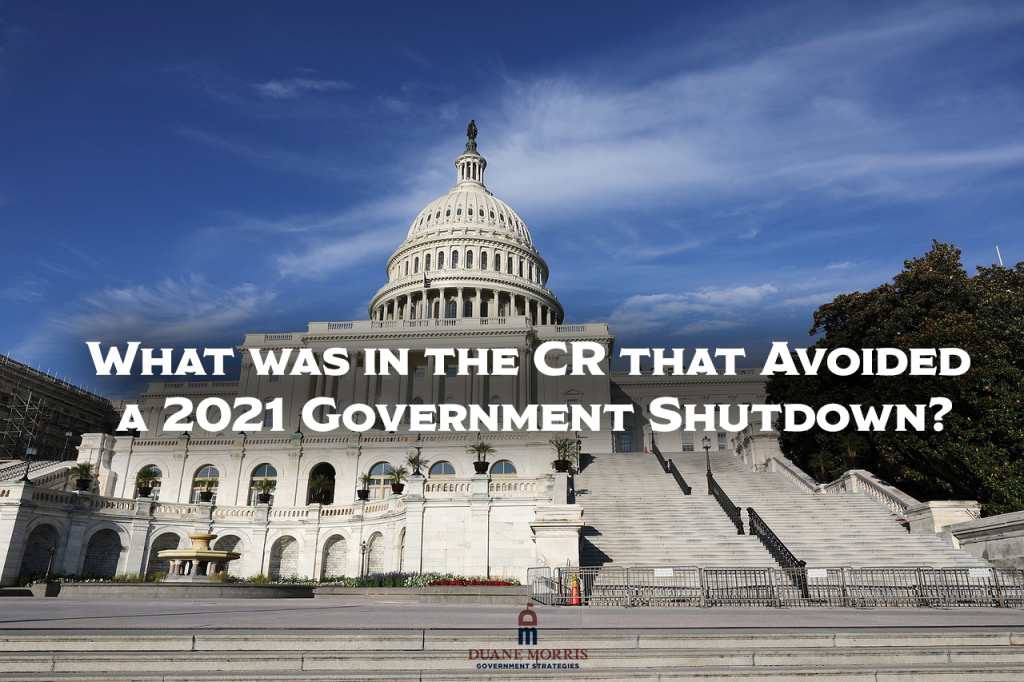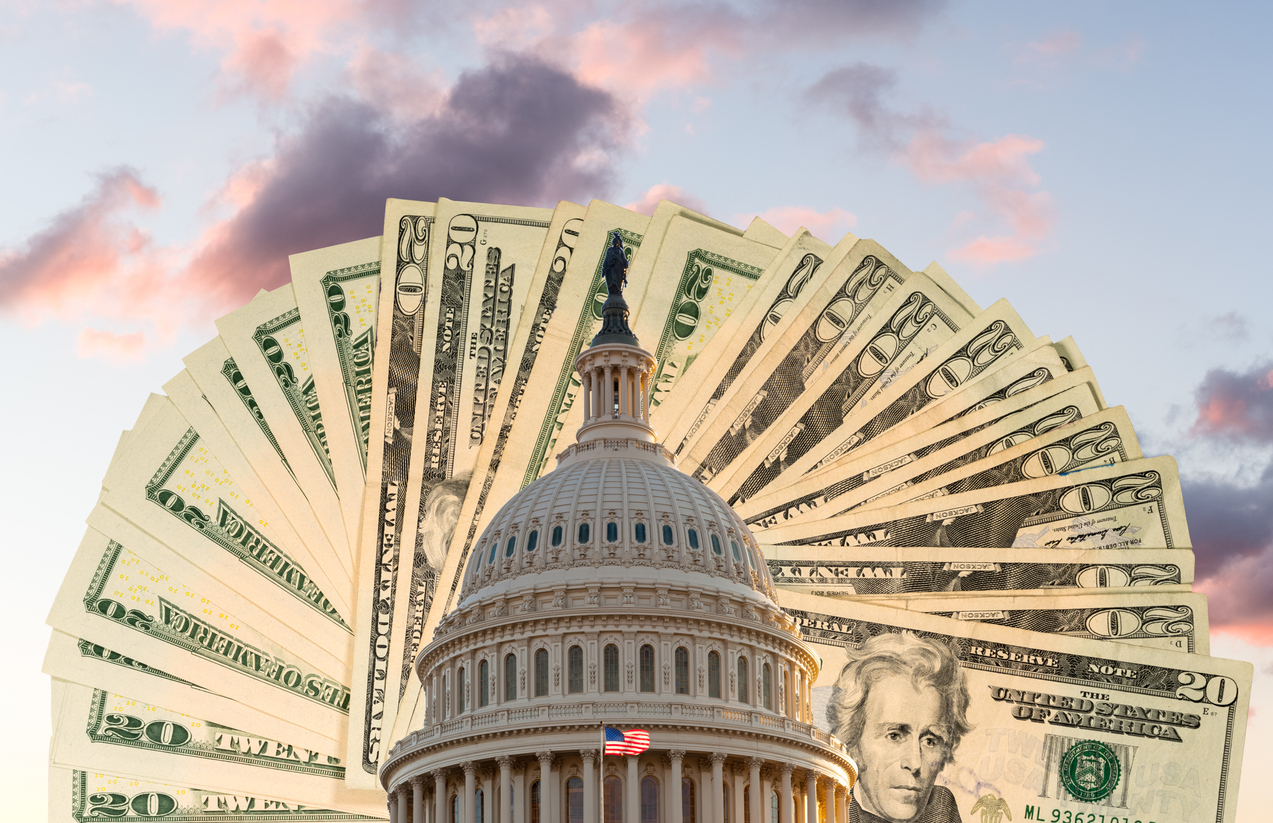Government funding was extended through December 3 by a Senate amendment to H.R. 5305, providing billions for disaster relief and Afghan refugees.
The continuing resolution (CR), extended fiscal 2021 funding levels, averting an October 1 government shutdown. It also included some “anomalies” adjusting those amounts. The White House had sent Congress a list of proposed anomalies, some of which the bill contained.
The measure also extended through December 3 the National Flood Insurance Program (NFIP) and other programs slated to expire after September 30. However, Congress separately passed an extension addressing surface transportation programs.
Extensions
The measure extended through December 3:
- Critical NFIP provisions allowing the Federal Emergency Management Agency (FEMA) to issue new policies and borrow as much as $30.4 billion from the Treasury Department (USDT)
- The Temporary Assistance for Needy Families (TANF) program
- The Education Department’s National Advisory Committee on Institutional Quality and Integrity (NACIQI)
- The U.S. Advisory Committee on Public Diplomacy (ACPD)
- The Health and Human Services Department’s (HHS’s) authority to make direct personnel appointments to the National Disaster Medical System (NDMS) in response to a public health emergency
- A temporary increase in territories’ Federal Medical Assistance Percentage (FMAP)
- The measure reduced amounts available in the Medicare Improvement Fund by $96 million to offset the cost of the extension
- A requirement for reporting livestock prices and market conditions
- EB-5 regional investor visas, the E-Verify program to determine employment eligibility, and other immigration authorities
The measure also extended several other authorities, including:
- United States Department of Agriculture’s (USDA’s) authority to waive the nutritional requirements of school meal programs if there is a supply chain disruption or it is otherwise necessary to provide food under the programs for the 2021-2022 school year
- Certain authorities of the Bureau of Reclamation (USBR) in western states, including emergency drought relief, for one year
- A $5,000 special assessment on individuals convicted of crimes related to human trafficking and sexual abuse through December 31
- The temporary scheduling of fentanyl-like substances under the Controlled Substances Act (CSA) through January 28, 2022
CR Anomalies
The measure provided $2.5 billion to support services for unaccompanied minors transferred to HHS.
It provided the following annualized funding amounts:
- $885 million for the Defense Department (DOD) to procure equipment for the Strategic Microelectronic Supply program
- $250 million for U.S. Citizenship and Immigration Services (USCIS) to reduce asylum backlogs and support its refugee program
- $247.7 million for the Transportation Department (DOT) to maintain the Essential Air Service (EAS) program in small communities
- $60 million for White House salary expenses
- $5 million for former presidents’ pensions, staff, and office space provided through the General Services Administration (GSA)
It also allowed funds to be apportioned, including for the:
- FEMA to provide disaster relief
- U.S. Agency for Global Media (USAGM) and other entities to support the evacuation of Afghan journalists
- USDA, during the first quarter of fiscal 2022, to increase the value of vouchers under the Special Supplemental Nutrition Program for Women, Infants, and Children (WIC) to a level recommended by the National Academies of Science, Engineering, and Medicine (NASEM) and adjusted for inflation
- DOD to procure military GPS user equipment
The measure increased to $841 million, from $291 million, under the fiscal 2021 spending law (PL 116-260) for nuclear cleanup. The CR allows the Energy Department (DOE) to spend funds more quickly during the CR.
The Veterans Affairs Department (VA) may use as much as $193.5 million to accelerate veterans’ disability benefits for particulate matter exposure during the Gulf War and some post-9/11 conflicts, as proposed in an August 5 rule.
Disaster Aid
The measure provided $28.6 billion in emergency funds for recent natural disasters, including:
- $10 billion for USDA to cover crop losses that occurred in 2020 and 2021; of that amount, $750 million to livestock producers
- $5.68 billion for the Army Corps of Engineers (USACE); of that amount, $3 billion for flood and storm risk reduction projects and $2.08 billion for disaster-related damages
- $5 billion for the Housing and Urban Development Department’s (HUD’s) Community Development Fund for major disasters that occurred in 2020 and 2021
- $2.6 billion for DOT reimbursements to states and territories to repair damage to roads and bridges caused by natural disasters
- $1.36 billion for the U.S. Forest Service (USFS) to address natural disaster damage
- $1.2 billion for the Small Business Administration’s (SBA’s) Disaster Loans Program
- $565 million for the Navy (USN) to repair facilities damaged by storms that occurred in 2020 and 2021
The measure also canceled outstanding balances for FEMA Community Disaster Loans as of September 30, 2021.
Latest News
Photo credit: iStock.com/Maha1450 In honor of Presidents’ Day, there is no better time than now to reflect on the significant legislative and executive achievements of our nation's leaders. Throughout the last nearly 250 years, each [...]
Photograph taken inside the state capitol of the spectacular 272-foot, 52 million-pound dome. On February 6, 2024, Pennsylvania Governor Josh Shapiro (D) delivered his 2024-25 Budget Address. Shapiro's 2024 budget aims to provide tangible benefits [...]
Photo Credit: iStock.com/William_Potter H.R. 3746 is a complex bill that aims to address critical financial issues in the United States. It suspends the debt ceiling, imposes spending limits, introduces work requirements, and adjusts energy permitting [...]
Photo credit: iStock.com/BackyardProduction On March 9, 2023, the White House released President Biden’s proposed budget for Fiscal Year 2024. The budget, representing $6 trillion in spending, aims to address several key issues, including climate change, [...]







Stay In Touch